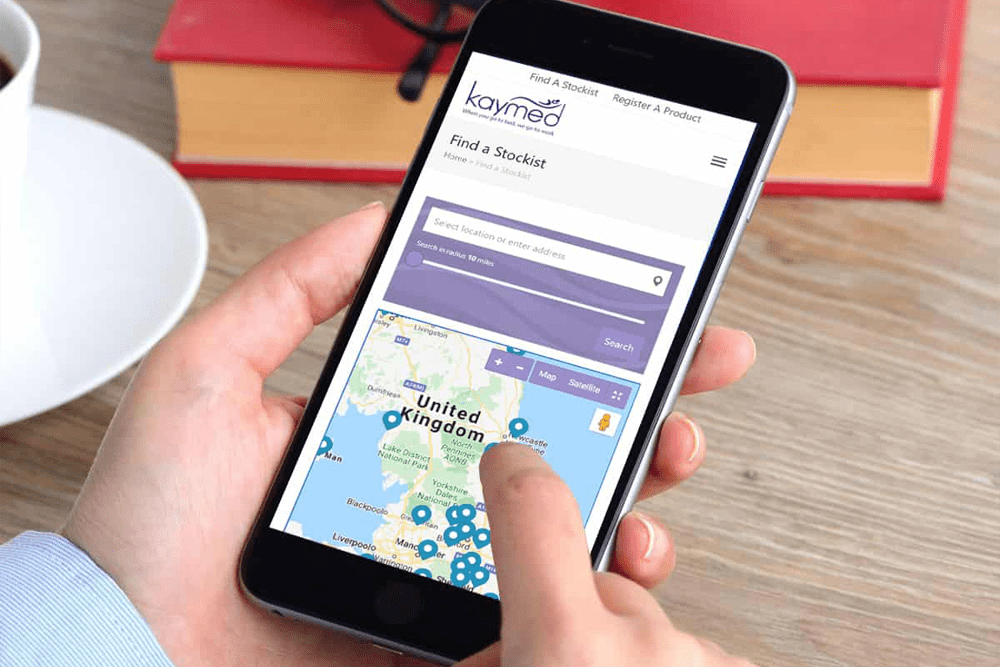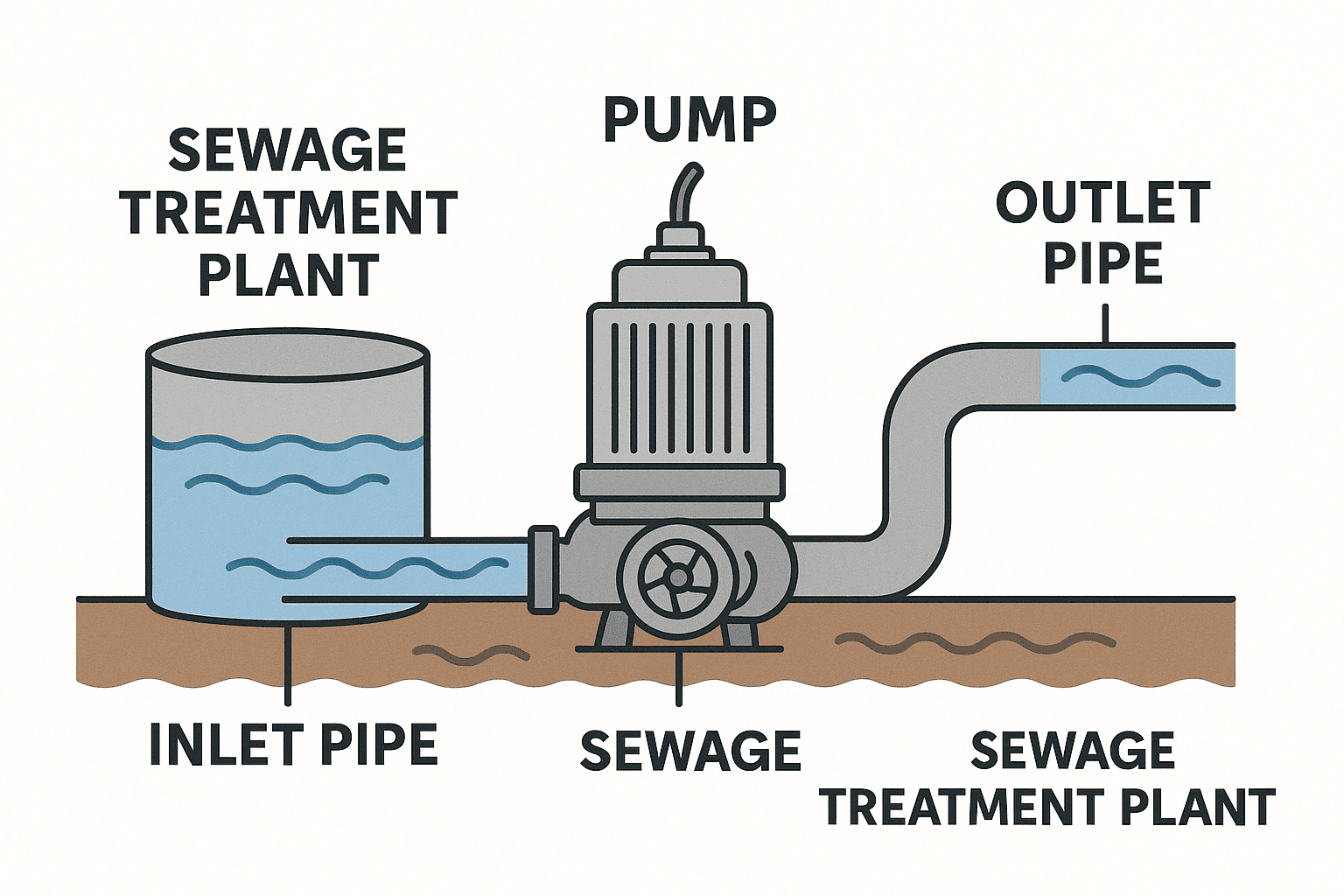The ability to understand and adapt to the moves of your competitors is paramount for sustainable growth. For B2B enterprises, where intricate relationships and strategic partnerships shape the market, conducting thorough competitor research becomes a strategic imperative. In this article, we consider the intricacies of competitor analysis within the B2B sector, unravelling the key steps and considerations that B2B companies need to navigate in order to stay ahead in the game.
Competitor research in the B2B space transcends a mere examination of products and pricing. It’s a nuanced exploration into the strategies, strengths, and weaknesses of industry peers, providing a compass to navigate the complex B2B terrain effectively. As B2B businesses strive to carve out their niche and capture market share, understanding the competitive landscape becomes not just a best practice but a cornerstone for informed decision-making.
We look into the multifaceted aspects of B2B competitor research, exploring the significance of product analysis, qualitative assessment, financial scrutiny, and marketing evaluation. From deciphering the messaging strategies of competitors to gleaning insights from customer feedback, this guide aims to equip SME businesses with the tools and insights needed to make strategic decisions that propel their businesses forward.
In an era where change is the only constant, staying ahead requires more than just knowing your products and services – it demands a keen awareness of the market, an understanding of industry trends, and an ability to anticipate shifts in customer preferences. So, let’s look at, unravelling the intricacies of B2B competitor research to empower SME manufacturers with the knowledge they need to thrive in a competitive landscape.
Understand the key players and market dynamics.
Conducting thorough research on your industry as an SME involves a combination of online and offline methods to gather relevant information. Here’s a step-by-step guide to help you understand the key players and market dynamics:
- Define Your Industry:
- Clearly define the industry or niche your SME operates in. Industry classifications, such as Standard Industrial Classification (SIC) codes or North American Industry Classification System (NAICS) codes, can help in this process.
- Industry Reports and Studies:
- Access industry reports from reputable sources such as market research firms, industry associations, and government agencies. These reports often provide insights into market trends, growth projections, and key players.
- Government Publications:
- Check government publications and databases for industry statistics and market trends. These may include economic reports, trade publications, and industry-specific reports published by government agencies.
- Industry Associations:
- Join industry associations relevant to your business. Attend conferences, seminars, and events organised by these associations to network with industry professionals and gain insights into market dynamics.
- Trade Shows and Exhibitions:
- Attend trade shows and exhibitions related to your industry. These events provide opportunities to interact with industry leaders, observe new technologies, and identify key players.
- Online Business Directories:
- Explore online business directories specific to your industry. Websites like ThomasNet, Kompass, and industry-specific directories can provide a list of companies operating in your sector.
- Market Research Firms:
- Utilise the services of market research firms that specialise in your industry. These firms often conduct in-depth studies, surveys, and analyses that can provide valuable insights.
- Competitor Websites and Financial Reports:
- Analyse the websites of key players in your industry. Look for information on their product offerings, target markets, and value propositions.
- Check for publicly available financial reports and statements of larger competitors. Annual reports can provide details on financial performance and strategic initiatives.
- Customer Feedback and Reviews:
- Analyse customer feedback and reviews not only for your business but also for competitors. This can provide insights into customer perceptions, satisfaction levels, and areas for improvement.
- Social Media Monitoring:
- Monitor social media platforms for industry discussions, trends, and news. Join relevant groups or forums to engage with industry professionals and stay updated on market dynamics.
- Networking:
- Engage in networking events, both online and offline. Build relationships with professionals in your industry, including suppliers, customers, and competitors. Networking can provide valuable first hand information.
- Academic Research and Journals:
- Explore academic research related to your industry. Academic journals and publications often contain in-depth analyses, studies, and insights that can contribute to your understanding of market dynamics.
By combining information from these sources, you can develop a comprehensive understanding of your industry, identify key players, and stay informed about market trends and dynamics. Regularly update your research to adapt to changes in the industry landscape.
Performing online searches using relevant keywords
Performing online searches using relevant keywords is a crucial step in conducting competitor research for your SME. To effectively execute this process, start by defining specific terms that are relevant to your industry, products, or services. These keywords should reflect the core aspects of your business and the market you operate in. Once you have a list of relevant keywords, consider the following approach:
Begin by using search engines such as Google, Bing, or Yahoo to enter your chosen keywords. Craft search queries that encompass various aspects of your business, including product names, industry terms, and geographical locations if applicable. Analyse the search results to identify companies or websites that consistently appear at the top. These are likely to be key players in your industry.
Explore the websites of these potential competitors in detail. Look for information on their products or services, pricing strategies, target markets, and any unique value propositions. Pay attention to the design and functionality of their websites, as this can offer insights into their marketing approach and customer experience.
Utilise advanced search techniques to refine your results. This may include using quotation marks for exact phrases, excluding certain terms with the minus sign (-), or employing site-specific searches to focus on particular domains. These techniques can help you gather more precise information about specific aspects of your competitors’ online presence.
Extend your search beyond the first page of results. Competitors may not always appear at the top, so it’s important to explore multiple pages of search results. This allows you to uncover additional players in your industry and gain a more comprehensive understanding of the competitive landscape.
Take note of online advertising and sponsored content. Competitors may invest in online advertising to enhance their visibility. Pay attention to the ads that appear alongside search results or on other websites within your industry. This can provide insights into their marketing strategies and priorities.
Analyse the online reputation of your competitors. Look for customer reviews, ratings, and comments on platforms such as Google Reviews, Yelp, or industry-specific review sites. Understanding what customers are saying about your competitors can offer valuable insights into their strengths and weaknesses.
Set up Google Alerts for relevant keywords associated with your industry and competitors. This allows you to receive regular updates on new content, news, or mentions related to your specified keywords. Staying informed about industry developments and your competitors’ activities can help you adapt your strategy accordingly.
By systematically conducting online searches using relevant keywords, you can gather valuable information about your competitors’ online presence, strategies, and customer perceptions. This research is an ongoing process, and regular monitoring will enable you to stay abreast of changes in the competitive landscape.
Gaining feedback and reviews
Gaining customer feedback and reviews is a critical aspect of competitor research for an SME. To effectively gather this information, you can employ various strategies aimed at understanding customer experiences and perceptions. Begin by establishing direct communication channels with your existing customers. This can involve reaching out through email, surveys, or customer feedback forms embedded on your website. Encourage customers to share their thoughts on their experiences with your products or services, and inquire about any alternatives they considered before choosing your business.
Additionally, leverage social media platforms to engage with your audience. Monitor comments, mentions, and reviews on platforms such as Facebook, Twitter, and LinkedIn. Actively participate in discussions related to your industry to gain insights into customer preferences and their interactions with competitors. Social media can serve as a valuable source of unfiltered customer opinions.
Consider implementing a customer loyalty program or incentives for providing feedback. Offer discounts, exclusive access to new products, or other perks to encourage customers to share their experiences. This can not only help you gather valuable insights but also foster customer loyalty.
Regularly check and respond to reviews on popular review sites, such as Google Reviews, Yelp, or industry-specific platforms. Acknowledge positive feedback and address negative reviews professionally. Analysing the reviews of your competitors on these platforms can also provide a comparative perspective on customer satisfaction.
Conduct customer surveys that specifically address their decision-making process. Ask about factors that influenced their choice, what features they prioritise, and whether they considered alternative providers. Use open-ended questions to encourage detailed responses that can offer qualitative insights into customer preferences.
Engage in direct conversations with key clients, especially those who have been with your business for an extended period. Their experience and insights can provide valuable information about your competitors and the reasons they continue to choose your services.
Consider organising focus groups or in-depth interviews with a select group of customers. This qualitative approach allows for a deeper exploration of customer opinions, preferences, and perceptions. Probe into their experiences with competitors to gain a nuanced understanding of the competitive landscape.
Monitor online forums and discussion groups relevant to your industry. Customers often share their experiences and seek recommendations in these forums. By participating in these conversations, you can gain valuable insights into the factors influencing customers’ choices and their satisfaction levels with various providers.
Gaining customer feedback and reviews as part of competitor research involves a multi-faceted approach that includes direct communication, leveraging online platforms, and creating incentives for customer participation. By actively seeking and analysing customer perspectives, you can refine your understanding of the competitive landscape and make informed strategic decisions for your SME.
Supplier & Partner Networks
Exploring the network of suppliers and business partners in your industry is a crucial aspect of competitor research for an SME. To initiate this process, start by identifying key suppliers and partners associated with your business and industry. Conduct a thorough analysis using a combination of online and offline methods.
Begin by reviewing your own supply chain and identifying the primary suppliers and partners your business relies on. Consider both direct suppliers of raw materials or components and indirect partners, such as logistics providers, distributors, and service providers. These entities are often integral to your industry’s ecosystem.
Utilise industry directories, trade publications, and online platforms that specialise in business-to-business connections. These resources can provide comprehensive lists of suppliers and partners within your industry. Industry-specific directories may highlight key players and their roles in the supply chain.
Participate in industry events, conferences, and trade shows where suppliers and business partners gather. Engage in networking opportunities to establish connections and gain insights into the relationships between different businesses in your sector. Conversations with suppliers and partners can reveal valuable information about the competitive landscape.
Associations & Conferences
Join industry associations or forums that bring together professionals from your field. These platforms often facilitate discussions about key suppliers, industry trends, and collaborative opportunities. Engage in these discussions to expand your knowledge about the network of businesses operating in your industry.
Conduct interviews or surveys with key suppliers and partners to gather insights into their collaborations with other companies. Understand their perspectives on the strengths and weaknesses of competitors. Suppliers, in particular, may have valuable information about the performance and strategies of businesses similar to yours.
Utilise online business databases and platforms that provide information about company relationships and collaborations. Analyse the connections between your competitors and shared suppliers or partners. This can uncover potential dependencies and alliances within the industry.
Establish direct communication with your suppliers and partners to build strong relationships. Regularly communicate with them to stay informed about industry developments, potential changes in supply chain dynamics, and any notable shifts among your competitors. Suppliers may provide unique perspectives on market trends and competitor activities.
Monitor industry news and press releases for announcements related to supplier partnerships, collaborations, or changes in business relationships. These sources can offer real-time information about strategic moves within your industry, providing valuable context for your competitor research.
Consider attending supplier conferences or events organized by key players in your industry. These gatherings can provide first hand insights into the relationships between suppliers and businesses, offering a holistic view of the network that supports your industry.
By exploring the network of suppliers and business partners in your industry through a combination of research methods, you can gain a comprehensive understanding of the relationships and collaborations that shape the competitive landscape. This knowledge can inform your strategic decisions and help you identify potential opportunities and challenges within your industry ecosystem.
Online Tools for Conducting competitor Analysis
As an SME conducting competitor analysis, several online tools and services are available to gather valuable insights into your competitive landscape. These tools provide data on various aspects, including market share, online presence, and digital marketing strategies. One category of tools focuses on website analytics and SEO performance. Platforms such as SEMrush, Ahrefs, and Moz can help you assess your competitors’ website traffic, keyword rankings, and backlink profiles. These insights are crucial for understanding their online visibility and search engine optimisation strategies.
Social media monitoring tools such as Hootsuite, Brandwatch, and Mention can help you track your competitors’ activities across various social platforms. These tools allow you to analyse their social media engagement, sentiment analysis, and overall online presence. Understanding how competitors interact with their audience on social media can provide valuable insights into their marketing strategies and customer engagement efforts.
Competitor intelligence tools like Crayon and Kompyte specialize in tracking changes to competitors’ websites, messaging, and digital presence. They provide alerts and reports on competitors’ product launches, pricing changes, and marketing campaigns. This real-time information is crucial for staying informed about your competitors’ strategic moves.
For a broader view of market trends and industry insights, you can leverage market research platforms like Statista, IBISWorld, or Euromonitor. These services offer industry reports, market forecasts, and statistical data that can help you understand the overall market dynamics and competitive landscape.
Google Alerts is a free tool that allows you to set up notifications for specific keywords related to your industry and competitors. You’ll receive email updates whenever new content matching your criteria is published online. This can help you stay informed about news, articles, and mentions relevant to your competitors.
Additionally, email marketing and analytics tools like Mailchimp or Constant Contact can provide insights into competitors’ email marketing strategies. Subscribe to competitors’ newsletters to understand their messaging, promotions, and audience targeting.
Customer review platforms such as Yelp, Google Reviews, and Trustpilot offer insights into customer perceptions and experiences with your competitors. Monitoring these reviews can help you identify strengths and weaknesses in your competitors’ products or services.
While these tools offer valuable data, it’s essential to approach competitor analysis holistically. Combine the insights gained from online tools with qualitative research, customer feedback, and industry expertise to develop a comprehensive understanding of your competitive landscape. Regularly updating your analysis will ensure that you stay informed about changes and trends within your industry.
Critically Reviewing Competitor Websites
Conducting a systematic and thorough review of your competitors’ websites is a critical component of competitor analysis for your SME. Start by examining the overall design and user experience of each website. Evaluate the layout, navigation, and ease of use to understand how they present information to visitors. This initial impression can provide insights into their brand identity and customer focus.
Explore the content on your competitors’ websites in detail. Analyse the product or service pages to understand their offerings, features, and pricing structures. Take note of any unique selling propositions or value propositions highlighted. Consider how they communicate with their target audience and the messaging they use to differentiate themselves in the market.
Scrutinise the ‘About Us’ section to gain insights into your competitors’ history, mission, and values. Understanding their brand story can offer valuable context for their positioning within the industry. Look for information about their team, leadership, and any notable achievements or milestones.
Examine the ‘Blog’ or ‘News’ section to identify the frequency and types of content they publish. This can reveal their approach to content marketing, thought leadership, and industry engagement. Pay attention to the topics covered, the depth of insights shared, and how they interact with their audience through comments or social sharing.
Evaluate the ‘Contact’ or ‘Support’ pages to assess the accessibility and responsiveness of your competitors. Look for contact information, customer support options, and any live chat features. Understanding how they facilitate customer communication can provide insights into their commitment to customer service.
Testimonials and Technical
Analyse the ‘Testimonials’ or ‘Case Studies’ sections to gather information about customer satisfaction and success stories. Assess the types of clients they showcase and the results they highlight. Customer testimonials and case studies can offer valuable social proof and highlight areas where competitors excel.
Inspect the ‘Resources’ section, if available, for downloadable materials such as whitepapers, e-books, or guides. This can provide insights into their content marketing strategy, the topics they consider valuable, and the resources they offer to educate their audience.
Investigate the website’s technical aspects, including page load times, mobile responsiveness, and overall performance. A well-optimised website indicates a commitment to providing a positive user experience, which can be a competitive advantage.
Utilise tools such as SEMrush, Ahrefs, or Moz to analyse your competitors’ websites from a technical SEO perspective. Assess their keyword rankings, backlink profiles, and overall search engine visibility. Understanding their SEO strategies can provide insights into their online marketing efforts.
By conducting a systematic and thorough review of your competitors’ websites, you can gain a comprehensive understanding of their online presence, messaging strategies, and customer engagement approaches. This information is crucial for identifying areas of opportunity, differentiating your SME, and making informed strategic decisions in the competitive landscape.
SWOT Analysis
Conduct a SWOT analysis (Strengths, Weaknesses, Opportunities, Threats) for your business. Identify areas where other businesses might pose a threat.
Conducting a SWOT analysis (Strengths, Weaknesses, Opportunities, Threats) is a valuable strategic planning tool for SMEs to assess their internal capabilities and external environment. Here’s a guide on how to conduct a SWOT analysis for your SME:
1. Identify Your Objectives:
- Clearly define the objectives or goals you want to achieve with the SWOT analysis. This could be related to a specific project, entering a new market, or overall business strategy.
2. Gather a Diverse Team:
- Involve key stakeholders from various departments within your SME to ensure a comprehensive perspective. Include individuals with different roles and expertise to contribute diverse insights.
3. Internal Analysis (Strengths and Weaknesses):
- Strengths:
- Identify the internal factors that give your SME a competitive advantage. This could include unique products or services, strong brand reputation, skilled workforce, or efficient internal processes.
- Consider what your customers and clients appreciate most about your business.
- Weaknesses:
- Evaluate internal factors that place your SME at a disadvantage. This might include gaps in skills, outdated technology, limited resources, or areas where competitors outperform.
- Consider feedback from customers, employees, and other stakeholders.
4. External Analysis (Opportunities and Threats):
- Opportunities:
- Identify external factors that could positively impact your SME. This might include market trends, emerging technologies, changes in regulations, or gaps in the competition.
- Explore potential areas for growth and expansion based on market research and industry trends.
- Threats:
- Analyse external factors that could pose challenges or threats to your SME. Consider economic downturns, regulatory changes, emerging competitors, or shifts in consumer behaviour.
- Be aware of potential risks and disruptions in your industry.
5. SWOT Matrix:
- Create a SWOT matrix, which is a four-quadrant table that organizes the identified strengths, weaknesses, opportunities, and threats. This visual representation helps in comparing internal and external factors.
6. Prioritise and Validate:
- Prioritise the most critical factors in each quadrant based on their impact on your objectives and overall business strategy.
- Validate the findings through discussions and feedback from the team, incorporating multiple perspectives.
7. Develop Strategies:
- Use the insights gained from the SWOT analysis to develop strategies that capitalize on strengths, address weaknesses, seize opportunities, and mitigate threats.
- Align these strategies with your business objectives and create an action plan for implementation.
8. Regular Review and Update:
- SWOT analysis is not a one-time exercise. Regularly review and update the analysis to adapt to changing internal and external conditions.
- Use the SWOT analysis as a dynamic tool to inform decision-making and strategic planning over time.
By systematically following these steps, your SME can conduct a thorough SWOT analysis to inform strategic decisions, improve internal processes, and position itself effectively in the competitive landscape.
Conducting Competitor Research Summary
Conducting competitor research as a Small and Medium-sized Enterprise (SME) manufacturer engaged in Business-to-Business (B2B) transactions is crucial for staying competitive and identifying opportunities for growth. The process involves a comprehensive analysis of your industry peers to understand their strengths, weaknesses, strategies, and market positioning.
Firstly, it’s essential to identify your direct competitors within the B2B manufacturing space. This involves looking at companies that offer similar products or services and operate in the same or overlapping markets. Once these competitors are identified, gather information on their product lines, pricing structures, distribution channels, and target customer segments. This initial step provides a foundational understanding of the competitive landscape.
Next, delve into the qualitative aspects of your competitors. Analyze their reputation in the market, customer reviews, and any unique value propositions they offer. Understand how they position themselves in the market and what messaging they use to communicate with customers. This qualitative analysis can provide insights into customer preferences, industry trends, and potential gaps in the market that your SME can exploit.
In addition to qualitative analysis, it’s crucial to examine the financial health of your competitors. Study their annual reports, financial statements, and any available information on their revenue, profit margins, and growth trends. This financial analysis can reveal how well your competitors are performing and give you an indication of their financial stability and investment strategies.
Furthermore, keep a close eye on your competitors’ marketing and promotional activities. Monitor their online presence, social media strategies, and participation in industry events. Understanding how competitors engage with their audience and promote their products can help you refine your own marketing strategies and stay ahead in the digital landscape.
Collaborate with your sales and customer service teams to gather valuable insights from the front lines. Customer feedback, inquiries, and objections can provide valuable information about your competitors’ strengths and weaknesses. By understanding what customers appreciate about your competitors and where they may fall short, you can tailor your offerings to better meet customer needs.
Finally, consider staying informed about industry regulations, technological advancements, and global economic trends that may impact your competitors. Anticipating changes in the business environment can give your SME a strategic advantage in adapting to shifts in the market.
In conclusion, conducting competitor research as an SME manufacturer in the B2B space involves a multifaceted approach, encompassing product analysis, qualitative assessment, financial scrutiny, marketing evaluation, and staying attuned to industry dynamics. Regular and thorough competitor research should be an ongoing practice to ensure your business remains agile and competitive in the ever-evolving B2B landscape.














